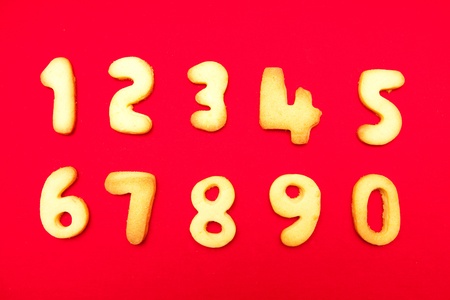Introduction to Palmistry in British Context
Palmistry, also known as chiromancy, has held a captivating presence throughout the tapestry of British history. This ancient art of divining an individuals character and potential future by studying the lines, shapes, and mounts of the hand finds its origins in distant Eastern traditions, but it took on a distinctive form as it journeyed through Europe and settled in Britain. From the bustling markets of medieval London to the refined parlours of Victorian society, palmistry wove itself into the fabric of British culture, both as a form of entertainment and as a subject of scholarly intrigue. Over centuries, this practice evolved, adapting to shifts in societal attitudes—oscillating between periods of scepticism and fascination. Today, palmistry is far from being a relic of the past; instead, it enjoys renewed relevance within contemporary British pop culture. As we set the stage for a deeper exploration, understanding how palmistry’s historical journey has shaped its modern-day manifestation offers valuable insight into its enduring appeal across generations in Britain.
2. Palmistry and British Popular Media
Palmistry, or chiromancy, has long held a curious place within the tapestry of British popular culture, weaving itself into the narratives of film, literature, music, and television. Its visual symbolism and esoteric allure have provided rich material for British storytellers and creators seeking to evoke mystery, fate, and self-discovery. In this section, we explore how palmistry is referenced across various media and analyse its significance both visually and narratively.
References in Film and Television
British cinema and television frequently employ palmistry as a narrative device or atmospheric detail. In classic films such as “The Lady Vanishes” and more contemporary series like “Doctor Who,” palmistry scenes often foreshadow pivotal plot twists or character revelations. The act of reading palms is portrayed with a blend of scepticism and fascination, reflecting the wider British ambivalence towards mysticism—at once intrigued yet reserved.
Table: Notable Examples of Palmistry in British Media
| Medium | Title | Year | Role of Palmistry |
|---|---|---|---|
| Film | The Lady Vanishes | 1938 | Foreshadowing events via a mysterious palm reader |
| Television | Doctor Who (“The Shakespeare Code”) | 2007 | Palmistry used as a plot device connecting magic and science fiction |
| Literature | Great Expectations by Charles Dickens | 1861 | Palm reading symbolises Pips uncertain future and social mobility |
| Music | “Fortune Teller” by The Rolling Stones (cover) | 1963 | Lyrics revolve around a palm reader shaping the protagonists destiny |
Palmistry in Literature and Music
The tradition of palmistry in British literature stretches back centuries. Authors such as Charles Dickens employed palm reading to signify uncertainty and hope, while modern writers may use it to highlight characters’ desires for control over their destinies. In music, iconic bands like The Rolling Stones have referenced fortune-telling in their lyrics, tapping into the enduring British fascination with fate versus free will.
Narrative and Visual Significance
The image of the open palm—etched with mysterious lines—is visually striking, providing directors, illustrators, and lyricists alike with a potent metaphor for destiny. Narratively, scenes featuring palmistry often signal moments of introspection or turning points; they invite both characters and audiences to ponder questions about agency, coincidence, and self-knowledge. Within British pop culture’s context, these motifs resonate deeply with themes of tradition interwoven with modern scepticism.

3. British Attitudes towards Palmistry
In contemporary Britain, attitudes towards palmistry are as varied as the lines upon a hand. Historically, the British have cultivated a reputation for scepticism, particularly regarding practices that fall outside mainstream science. Yet, beneath this veneer of doubt lies a persistent fascination with the mystical arts—palmistry being no exception. Recent surveys conducted by respected polling organisations reveal that while only a modest percentage of Britons profess to believe unequivocally in palm reading, a significant proportion admit to curiosity or casual interest. For many, palmistry is viewed less as a predictive tool and more as an engaging social experience or a conversation starter at gatherings.
Expert opinions reflect this complex landscape. Academics in fields such as psychology and folklore often highlight palmistry’s role in British culture as symbolic rather than literal, suggesting that its popularity stems from its ability to foster introspection and connection among individuals. Meanwhile, professional palmists—some with decades of experience on the British high street—report a steady stream of clients who seek reassurance, entertainment, or simply a novel perspective on life’s mysteries.
At the grassroots level, local markets and community fairs across the UK frequently feature palmists alongside tarot readers and astrologers. Here, one finds not only those who approach with genuine belief but also sceptics keen to test the waters for themselves. This blend of doubt and wonder is distinctly British—a testament to the nation’s enduring ability to balance rationality with a willingness to explore life’s more enigmatic corners. In sum, contemporary British attitudes towards palmistry reveal a nuanced interplay between cultural scepticism and an abiding fascination with what lies beyond the ordinary.
4. Palmistry at British Festivals and Cultural Events
Palmistry, once the preserve of mystics and Romani caravans, has found a lively home within the vibrant landscape of British fairs, festivals, and local gatherings. From the bustling avenues of Glastonbury Festival to the more intimate settings of village fetes and Christmas markets, palm readers are an increasingly familiar sight. Their tents, adorned with velvet drapes and mystical symbols, invite both the curious and the hopeful to pause amidst the revelry for a moment of introspection.
This presence is not merely a nostalgic nod to Victorian-era spiritualism but rather reflects contemporary Britains embrace of eclectic traditions and its appetite for experiential culture. The popularity of palmistry at these events speaks volumes about mainstream attitudes towards personal insight, entertainment, and the blending of ancient wisdom with modern leisure.
The Settings Where Palmistry Thrives
| Event Type | Typical Presence of Palm Readers | Cultural Significance |
|---|---|---|
| Music Festivals (e.g., Glastonbury) | High | Fusion of spirituality with modern entertainment; adds mystical dimension |
| Local Fairs & Village Fetes | Moderate | Nostalgic connection; encourages community engagement |
| Christmas Markets & Winter Fairs | Moderate to High | Offers warmth and intrigue during festive periods; links to fortune-telling traditions |
Mainstream Reflections: What Does This Tell Us?
The enduring allure of palmistry at these gatherings signals a collective yearning for guidance, storytelling, and meaning-making in everyday life. It suggests that, while Britain has become increasingly secular and technologically driven, there remains a soft spot for rituals that connect individuals to their inner selves and each other.
Moreover, engaging with a palm reader—often as much a social event as a spiritual one—serves as an icebreaker and conversation starter among festival-goers. It highlights how traditions can be both respected and reimagined, thriving alongside food stalls, live music, and artisan crafts.
The presence of palmistry at such diverse events also underlines its versatility: it adapts effortlessly from high-energy music festivals to the gentle rhythms of rural gatherings. Ultimately, this trend illustrates how British popular culture continues to value personalised experiences that blend entertainment with elements of introspection and communal folklore.
5. Palmistry and Modern British Identity
In today’s Britain, palmistry occupies a unique position at the crossroads of identity, multiculturalism, and evolving spiritual trends. The nation’s rich history of migration and cultural exchange has created a vibrant tapestry, where ancient practices like palm reading find renewed expression. Palmistry, once seen as an esoteric art reserved for Romani fortune tellers or Victorian parlours, now resonates with Britons from all walks of life who seek meaning in an increasingly complex world.
For many, exploring palmistry is a way to reconnect with personal heritage or to embrace a broader sense of belonging within Britain’s multicultural framework. The practice has found new adherents among younger generations eager to blend traditional wisdom with contemporary values. In London, Manchester, and other cosmopolitan centres, palmistry circles and workshops are flourishing alongside yoga studios and mindfulness seminars. These gatherings often reflect the diversity of British society, bringing together people from various backgrounds who share a curiosity about self-discovery.
Moreover, palmistry aligns well with modern Britain’s fascination with alternative spirituality. As organised religion plays a less dominant role in public life, individuals increasingly turn towards personalised spiritual paths. The lines on one’s hand become more than mere curiosities—they are viewed as intimate maps reflecting character traits, potential challenges, and future opportunities. In this way, palmistry offers both a mirror for introspection and a tool for forging connections across cultural divides.
The practice also raises intriguing questions about fate versus free will—a theme that resonates strongly in contemporary British thought. Some see their palms as fixed blueprints; others interpret them as living texts that change over time, shaped by choices and experiences. This philosophical flexibility allows palmistry to coexist harmoniously with Britain’s ethos of individuality and self-invention.
Ultimately, palmistry in modern Britain serves not just as entertainment or superstition but as a subtle thread weaving together past traditions and present identities. It stands as a testament to the country’s capacity for adaptation and inclusivity—qualities that continue to shape the British spirit in the 21st century.
6. Commercialisation and Social Media Influence
In the vibrant tapestry of contemporary British pop culture, palmistry has found renewed vigour through commercialisation and the pervasive influence of social media. Once the preserve of mysterious parlours and village fairs, palm reading now thrives as a business, fuelled by the entrepreneurial spirit characteristic of modern Britain. An increasing number of practitioners have taken to offering their services online, catering to a diverse clientele who seek guidance or entertainment with just a click. Platforms such as Instagram, TikTok, and YouTube have become fertile ground for ‘digital fortune telling’, where charismatic palmists share quick readings, tutorials, and myth-busting content that engages both sceptics and believers alike.
This digital renaissance has allowed palmistry to adapt seamlessly to current trends in self-discovery and personal branding. British entrepreneurs have capitalised on this demand, launching mobile apps, virtual consultations, and subscription-based content that blend traditional wisdom with cutting-edge technology. The accessibility of these services has helped demystify palmistry for a younger audience, positioning it less as an occult practice and more as a form of lifestyle advice or even entertainment. Online communities centred around palmistry flourish, creating spaces where users can exchange hand photos, interpretations, and experiences.
The commercial success of palmistry in Britain today is thus closely intertwined with its social media presence. Influencers who specialise in palm reading often collaborate with brands or participate in live events, further blurring the lines between ancient art and contemporary business. This synthesis of entrepreneurship and digital culture not only sustains interest in palmistry but also shapes its evolving role within British popular culture—transforming it into a dynamic industry that reflects the nation’s unique blend of tradition and innovation.
7. Conclusion: The Enduring Allure of Palmistry
In reflecting upon the sustained fascination with palmistry within contemporary British pop culture, it becomes evident that its charm lies in a blend of tradition, mystery, and the universal quest for self-understanding. Despite the rational and scientific underpinnings that characterise modern British society, palmistry continues to thrive as both an entertaining diversion and a tool for personal reflection. This enduring appeal can be attributed to several factors: the deep-rooted cultural nostalgia for folklore, the accessibility of palmistry at festivals and in the media, and its ability to offer comfort or guidance during uncertain times. British popular culture, with its penchant for reinvention, has embraced palmistry not just as a mystical practice but as a symbol of individuality and curiosity. As new generations discover this ancient art—whether through television shows, social media trends, or local fairs—its imagery and language persistently evolve. While scepticism remains prevalent, palmistry’s future seems assured by its adaptability and its unique power to spark conversation about fate, identity, and possibility. Looking ahead, it is likely that palmistry will continue to be reimagined within the tapestry of British pop culture, serving as both a mirror to society’s hopes and a gentle nod to its time-honoured traditions.


